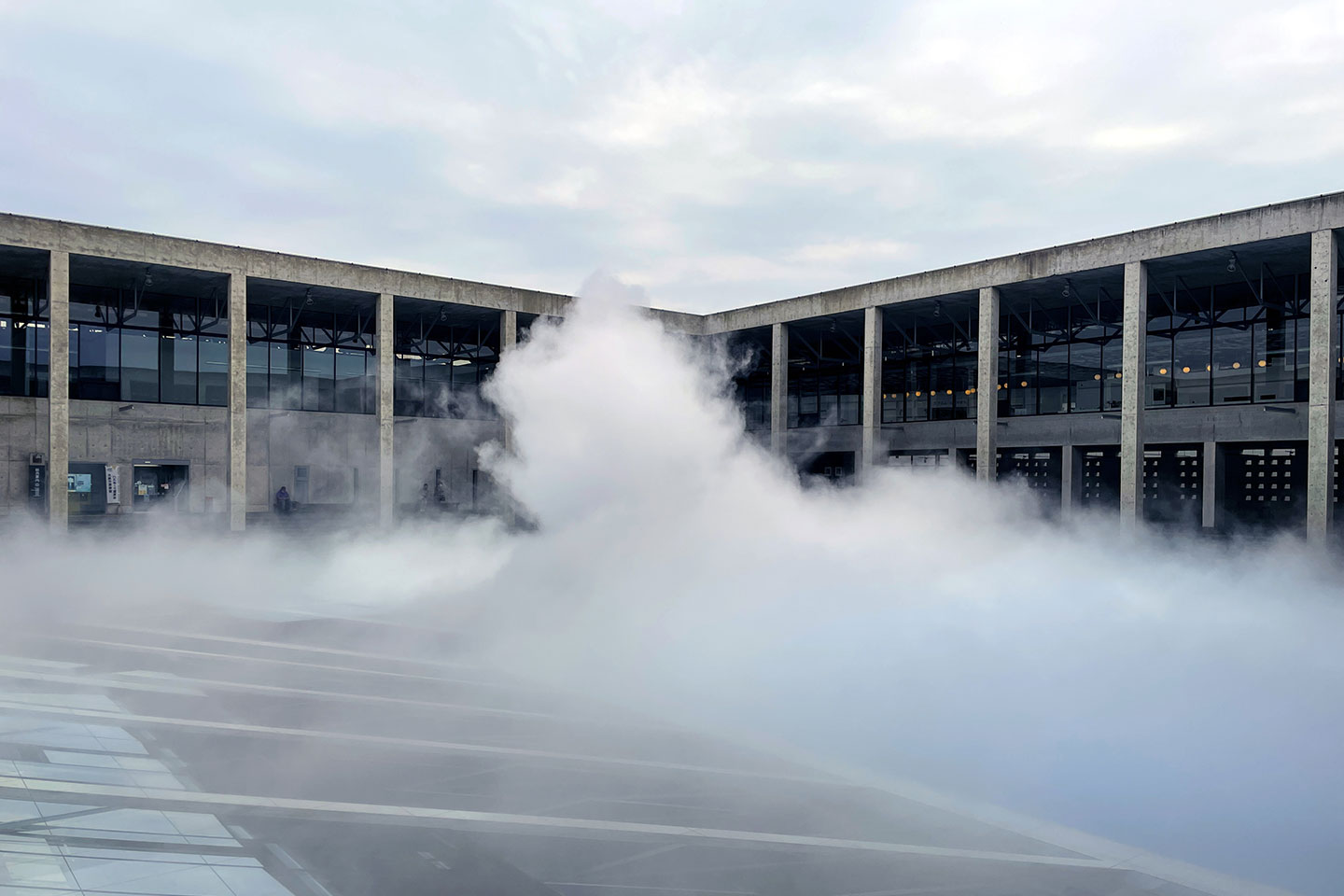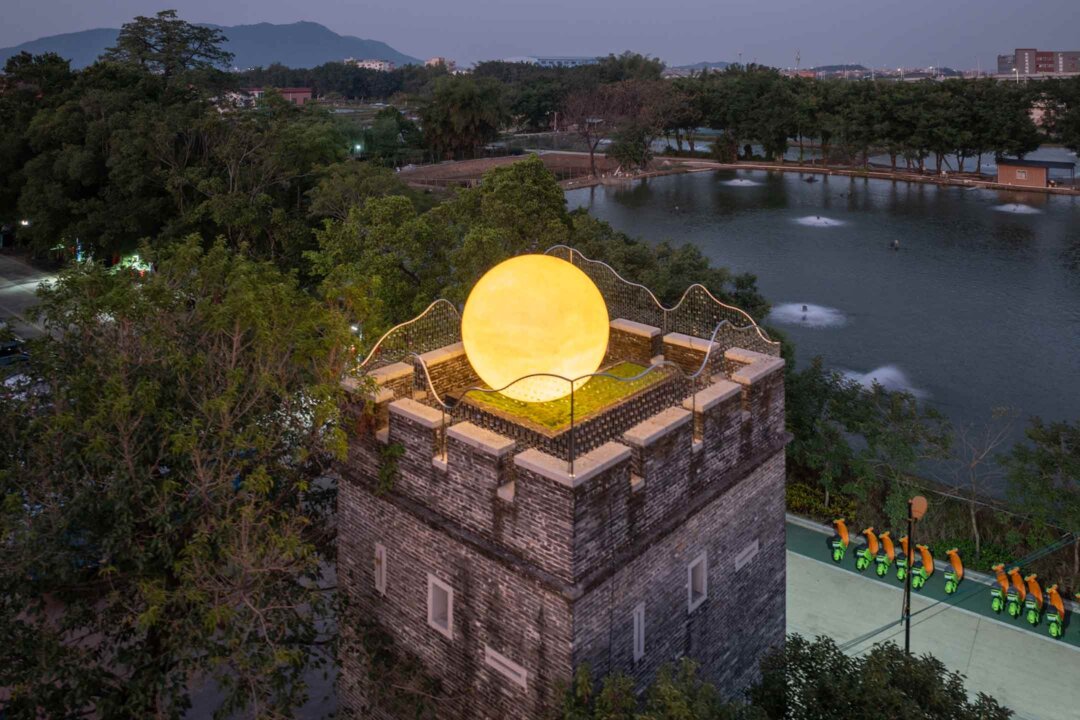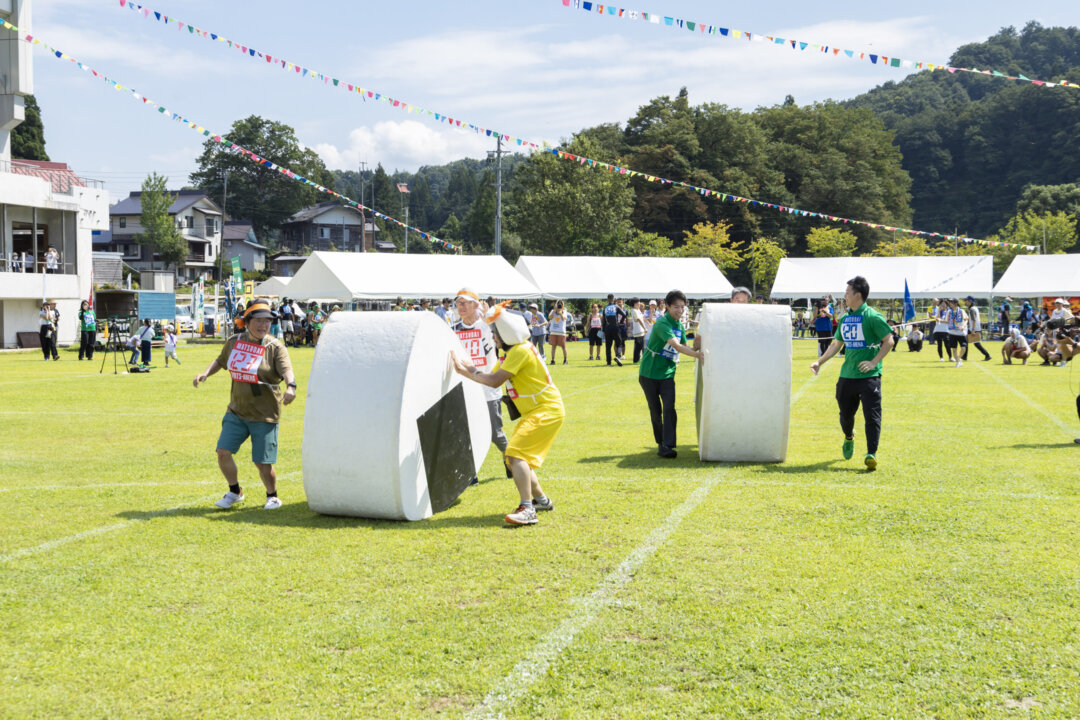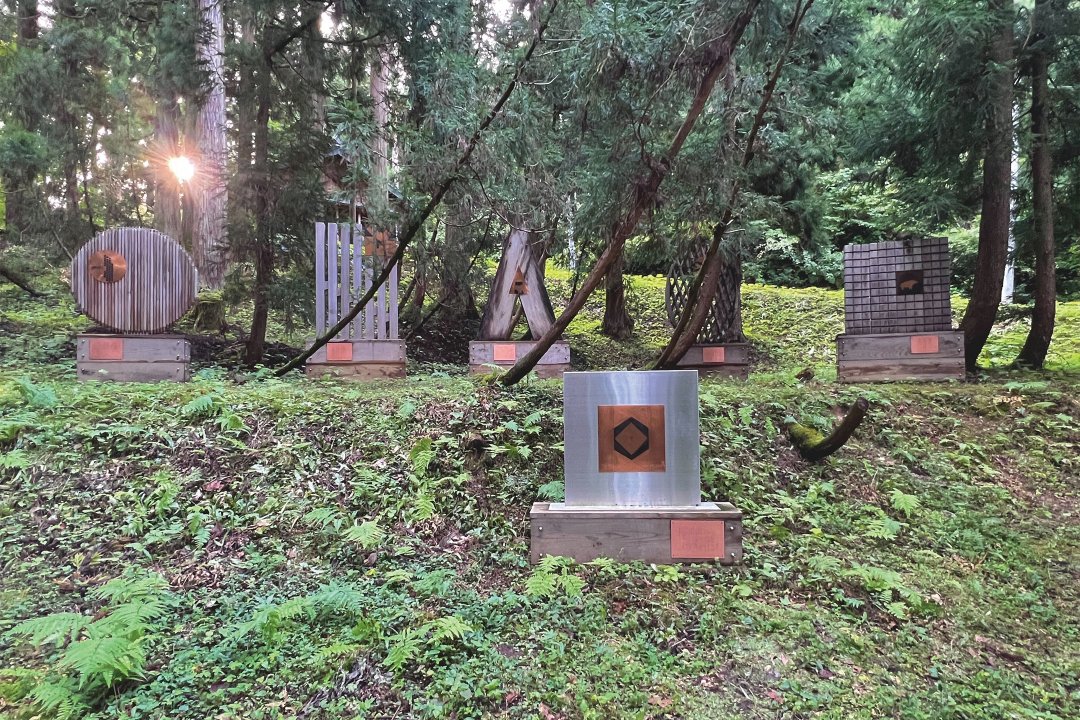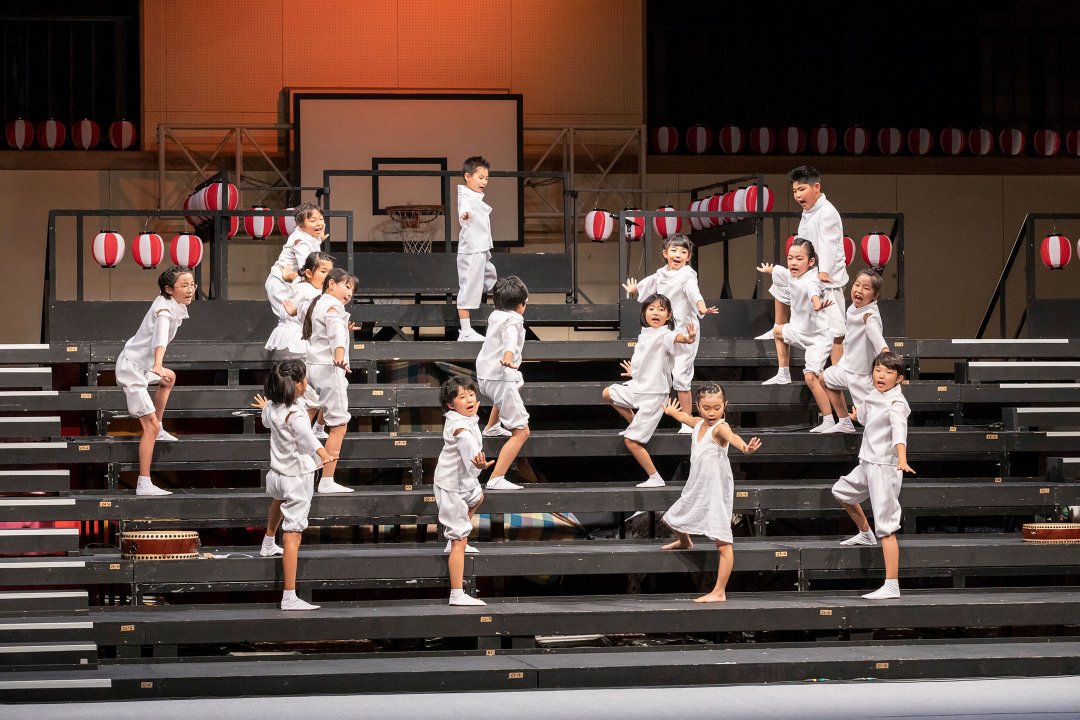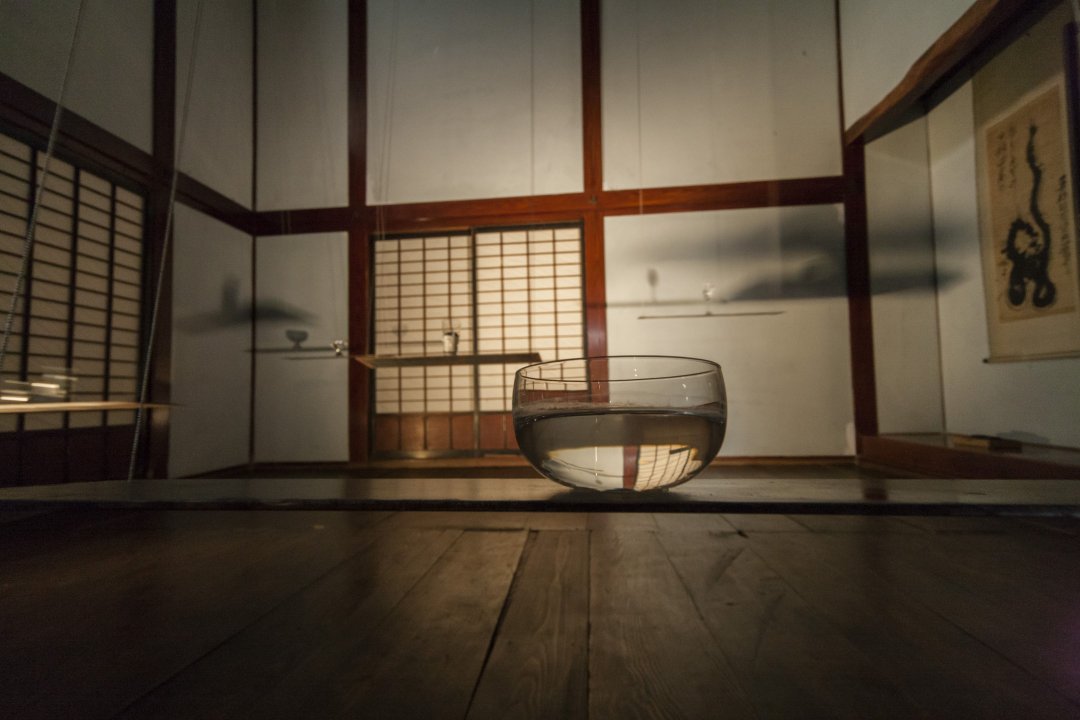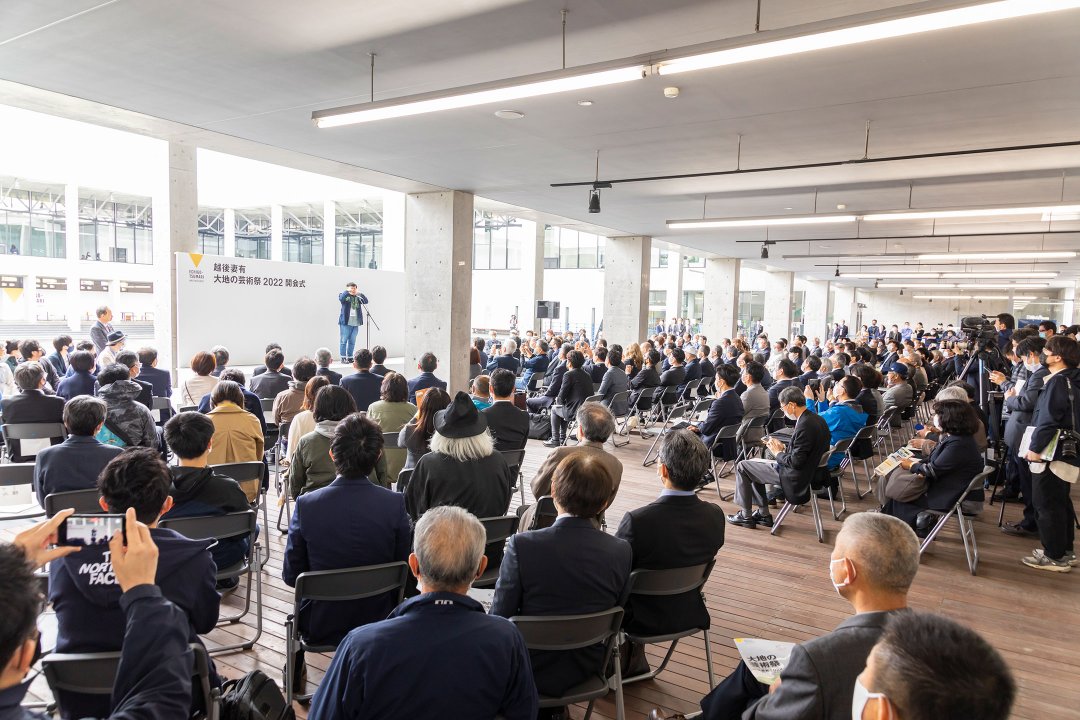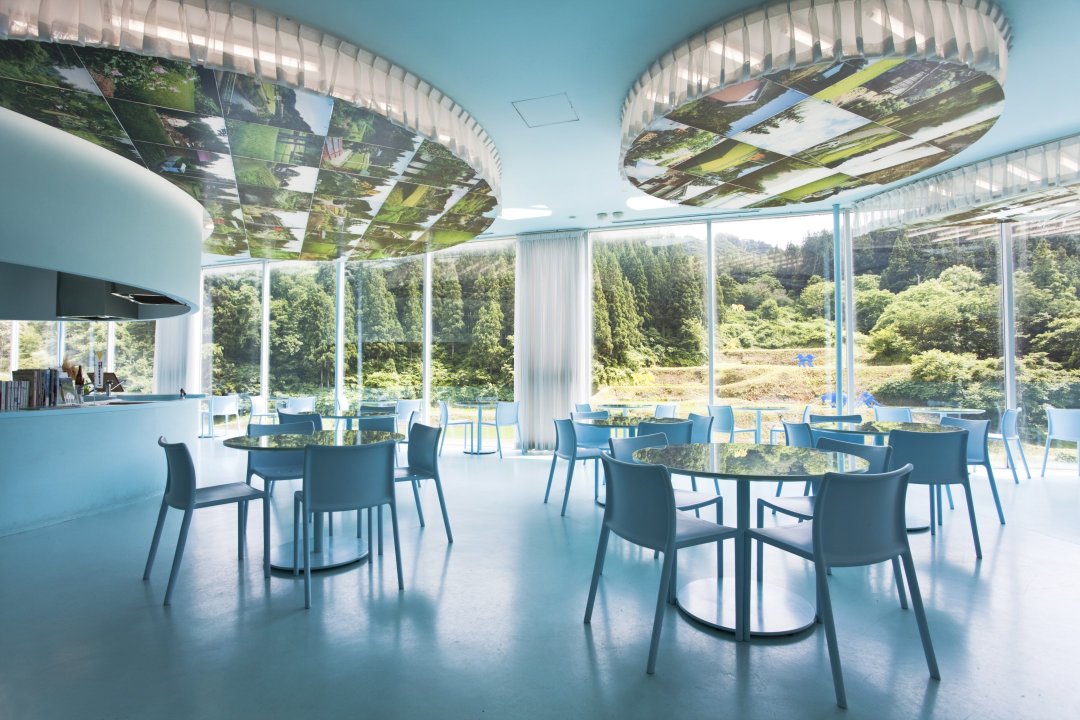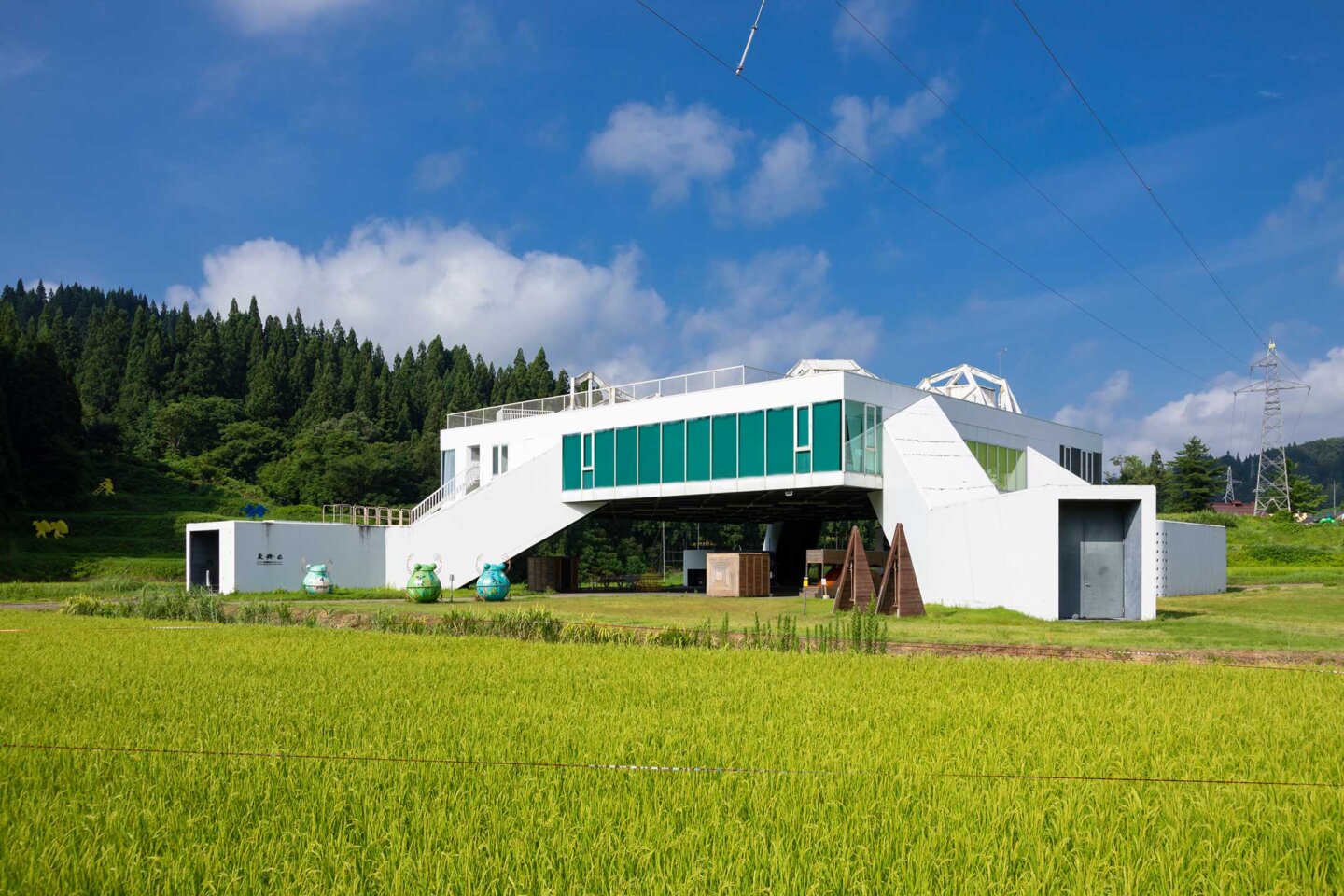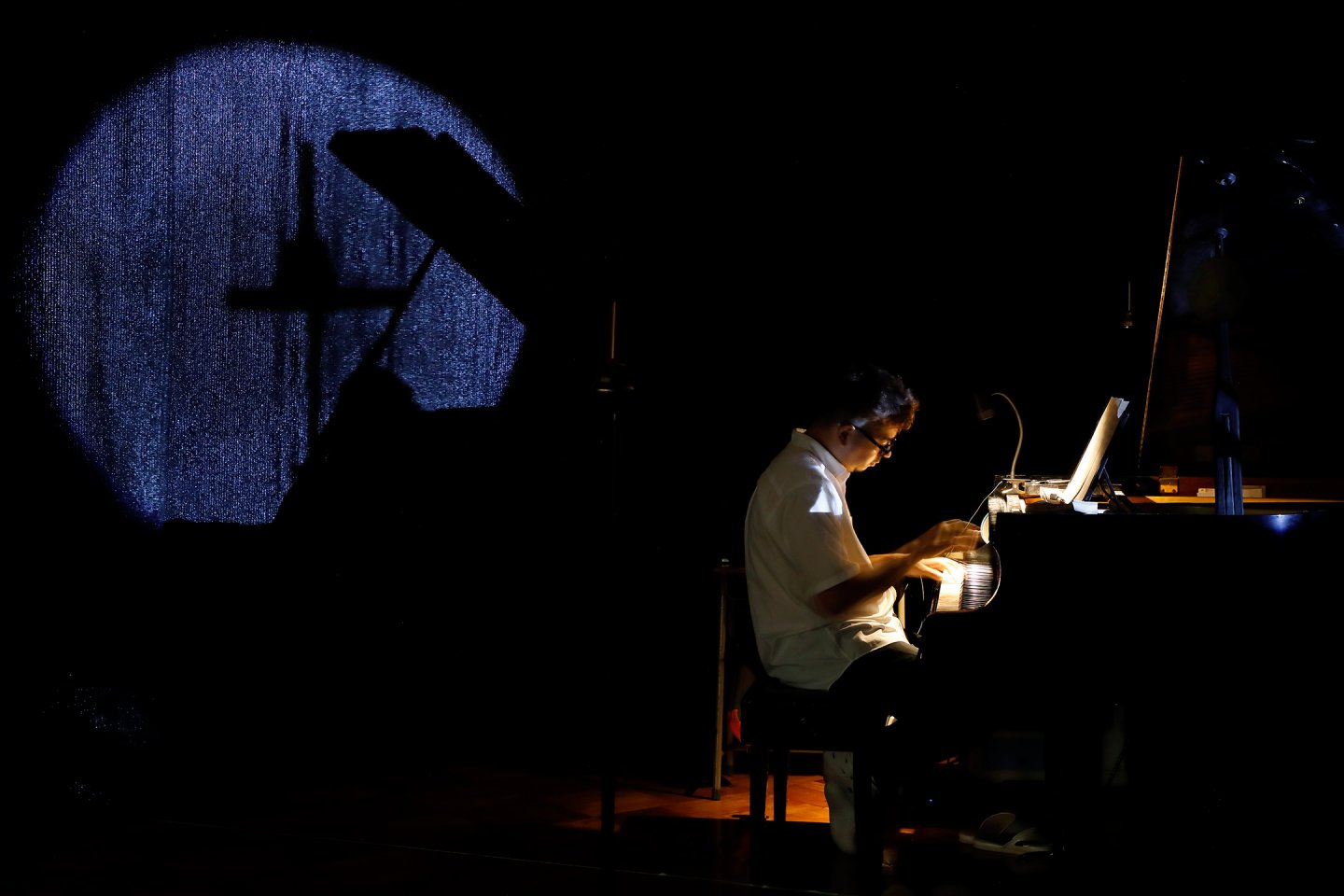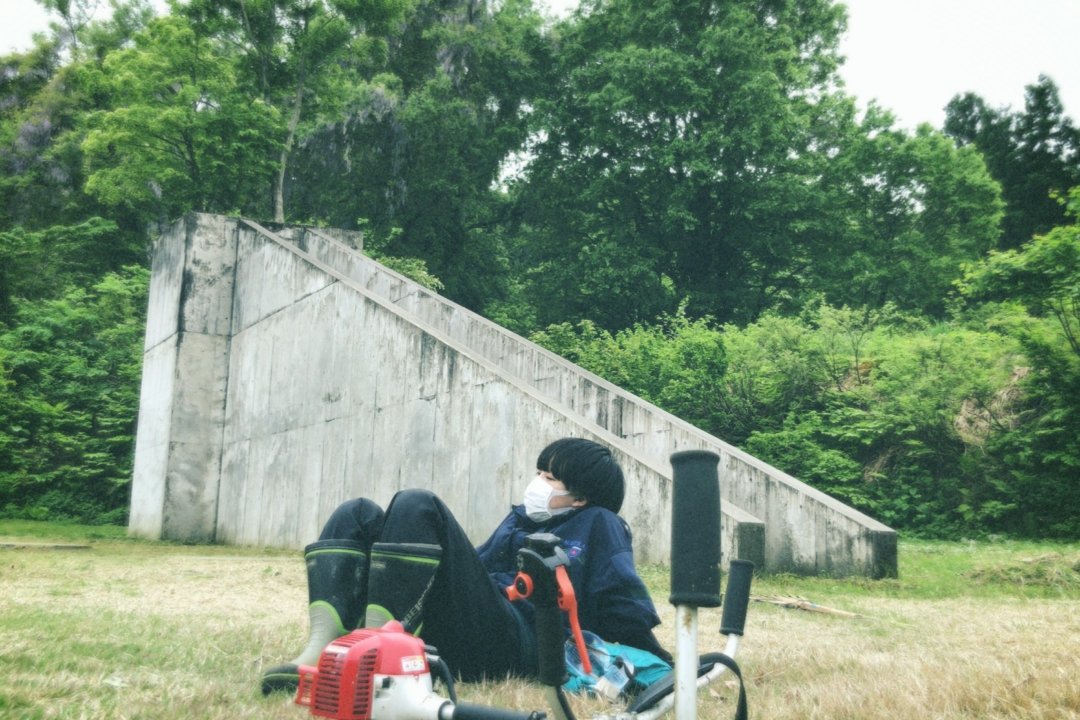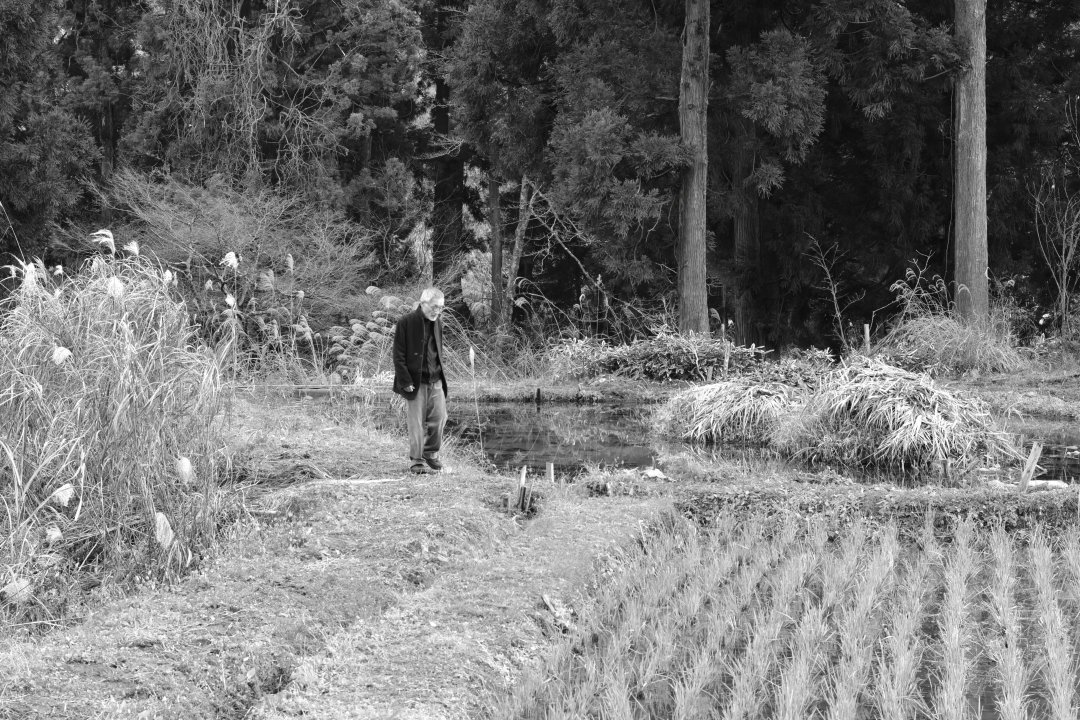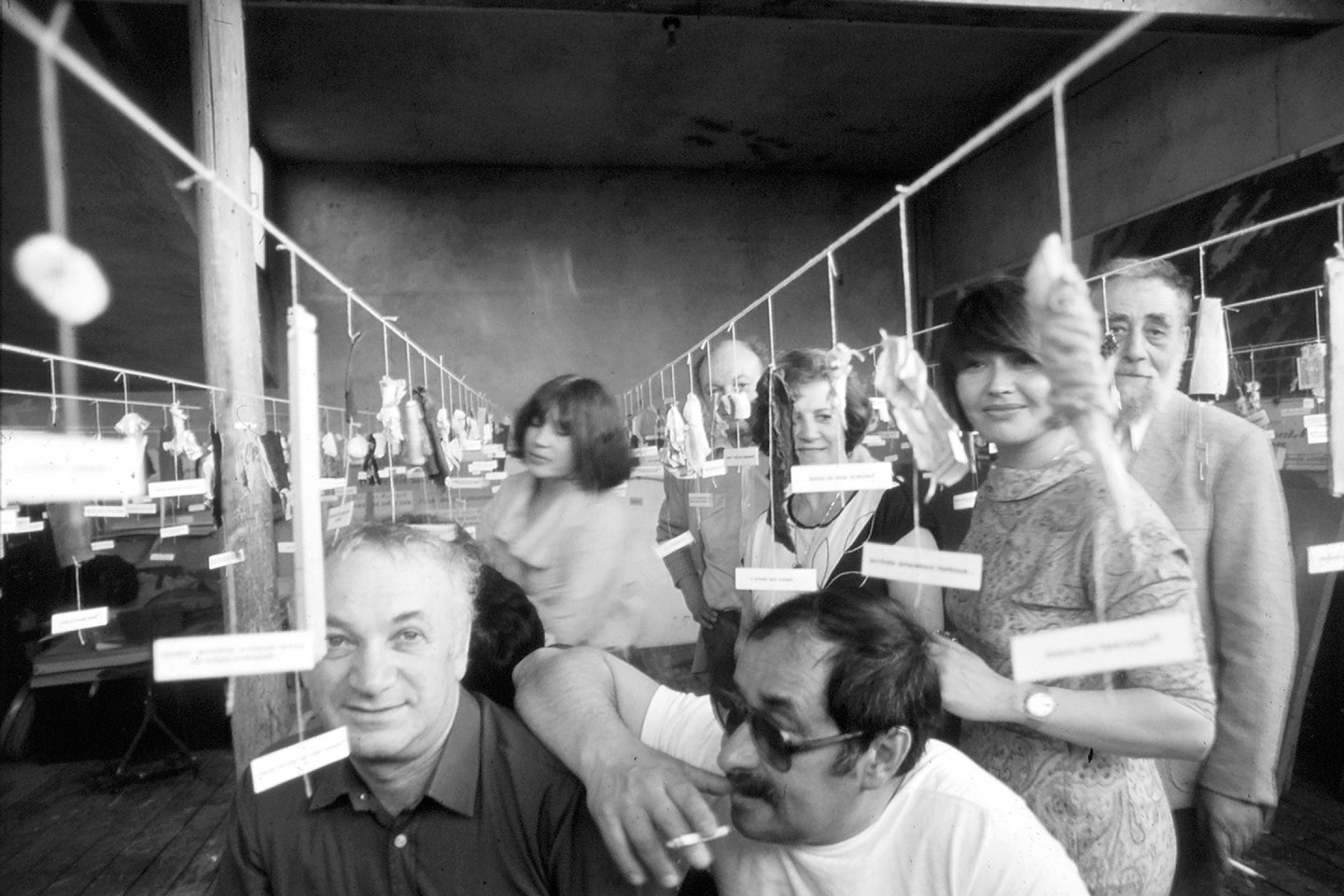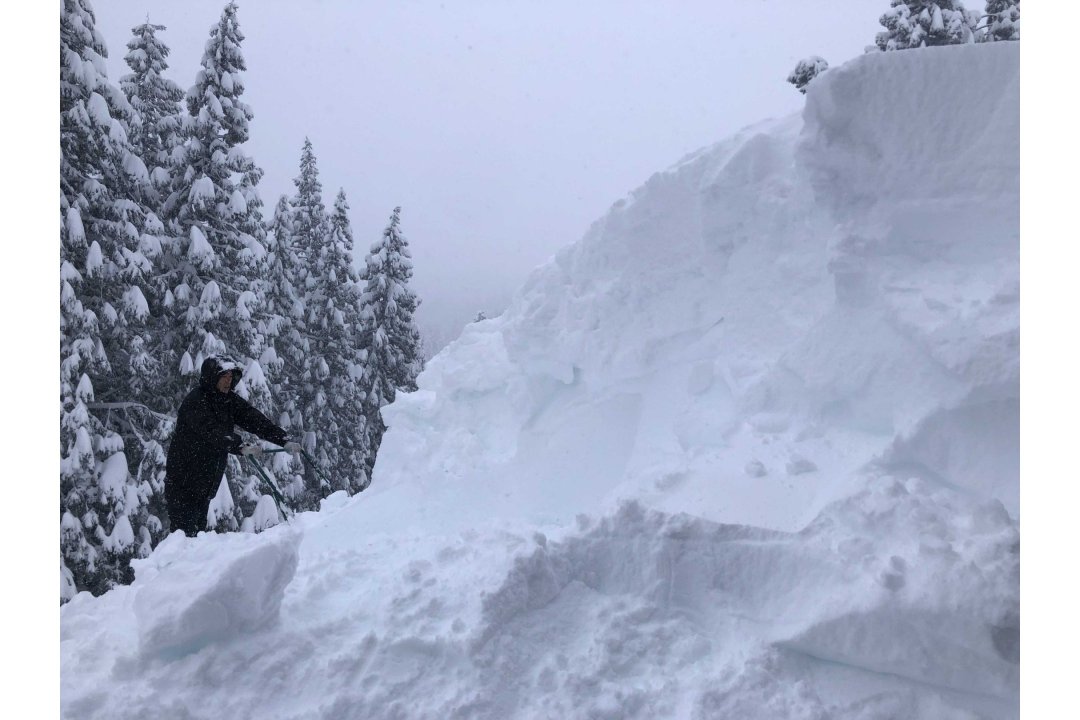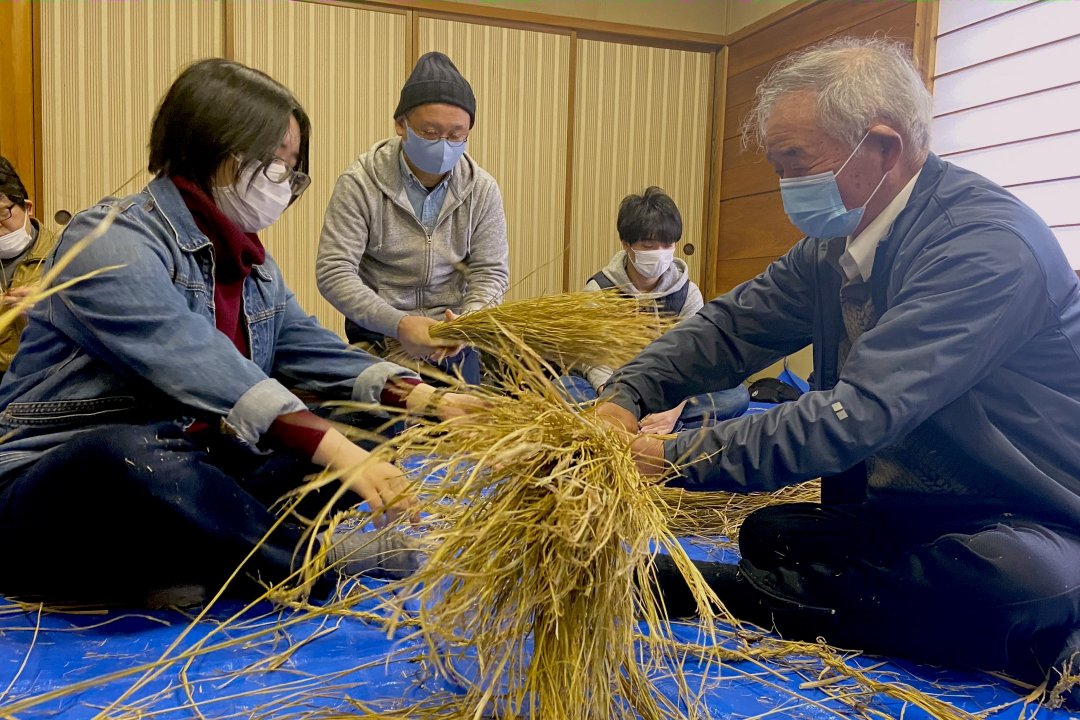Thinking 21st century art in the world from Niigata
Echigo-Tsumari Art Field - Official Web Magazine
Feature / Director's Column
This and that about ETAT 2022 ⑦(Written on 4 Aug)
Kitagawa Fram (Editor-in-chef of “Art from the Land” / General Director, ETAT)
Through this series of column, Kitagawa Fram, General Director of the festival shares "this and that about ETAT" which runs from 29 April for 145 days.
Text by Kitagawa Fram
05 August 2022
The summer season of ETAT 2022 has finally begun on 30 July. While a couple of works are still under maintenance, we try our best to welcome you to the festival with comprehensive COVID-19 measures. I am pleased to hear positive feedback from those who have visited so far.
Kuwakubo Ryota said on 17 July regarding the re-production of his destroyed work as follows:
There is a certain kind of beauty in the way things are scattered around.
That was how I felt when putting away fragmented pieces of my destroyed work.
While it was an inappropriate and inconvenient feeling, how you find something beautiful, in the first place, occurs to your mind regardless of whether it is right or not. It is tricky in this regard.
In order to make sense of this awkward feeling myself, I am allowed to create a new work.
In this work, fragmented pieces of a mirror that are randomly placed, somehow reflect orderly mosaic patterns.
Through this work, I tried to create a situation where orders that are once lost make alternative orders when rearranged.
So, we will present “Entropia” from 30 July to 4 September and re-open “LOST #6” from 8 September onward.
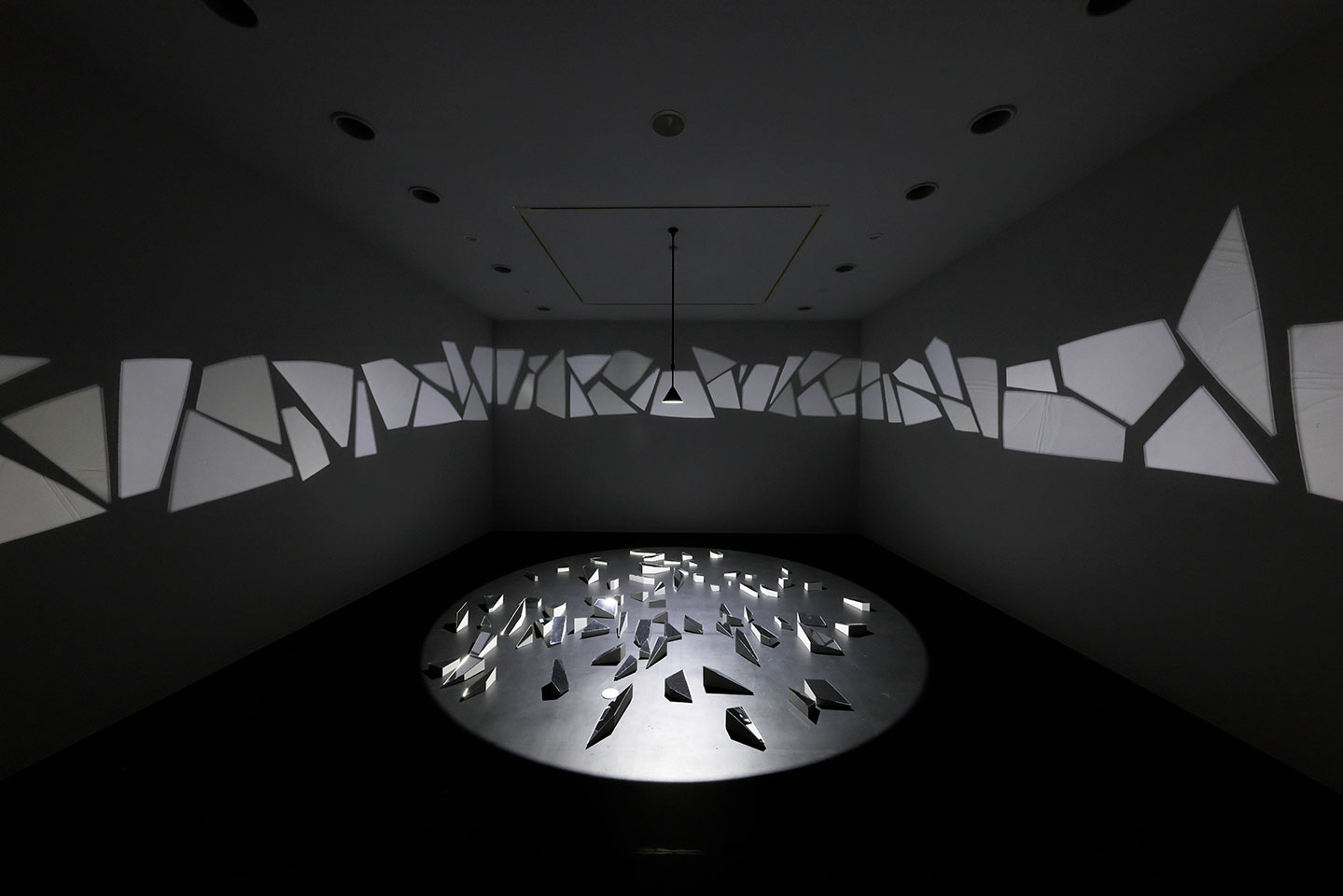
Special exhibition of “Entropia” by Kuwakubo Ryota (30 Jul – 4 Sep 2022) Photo by Kioku Keizo
I have conveyed the following message to the school and Niigata City Education Board:
・How do you resolve the issue. Children are watching adults.
・We will present the general damages but we will leave it to you to decide.
・I would like to have a dialogue or to organise a workshop at school conducted either by me or Mr Kuwakubo.
After the work was destroyed on 21 April, I had had conversations with Mr Kuwakubo from time to time that had lead to his comment on 9 June as follows:
—First of all, I can withstand the damage caused by this situation because I now know that how many people love my work. I am grateful for their support.
—I still don’t understand everything about what happened in the dark exhibition room and how the students came to do this. Since they are still in junior high school, we have to be very careful in what we say about them and how we respond. As you can see from looking back on your own life, everyone makes little mistakes when they are young. The result alone may have crossed the line, but still, no one was hurt. Indeed, the work was destroyed, but a thing is a thing. Fortunately, each of the materials used in this work appears repairable or reproducible. (Most of them were contributed by local people). Furthermore, the artist is still alive and has the will and physical strength to restore the piece. So from a physical point of view, the situation is not so serious.
—More importantly, they need the help of adults, schools, and the community to let them express their inner frustrations, anger, and desires in different ways. These things are beyond the artist’s control. But at the very least, through the restoration, I will do my best to ensure that this incident does not leave a bad mark on them, their community, or those who love the arts. Let us all have a great summer holiday.
I was pleased by the feeling shown by people including those on social media. It was a wish for the restoration of the work and a desire to see it again. Could it be an outcome of the twenty years of running the festival? It was reassuring to see that those who support the festival have a firm perspective on the regional environment and the role that art plays in contemporary society.

“LOST#6” by Kuwakubo Ryota
Photo by Nakamura Osamu
New works
Let me introduce you to new works. First of all, “KIRI-KAGhttps://www.echigo-tsumari.jp/URA” by Nakaya Fujiko, shown at MonET. Before you would grasp fog which runs like the Russell vehicle proceeding diagonally across from the edge of the pond, another fog rises like a cumulonimbus cloud from the centre point of the pond. Then you will see how they continue to change like symphony-like continuous changes between parallel and vertical. The 10 minutes felt like a second. You will definitely see it as it happens every half an hour.
“Les Regards” by Christian Boltanski was invigorating. I walked into the wood from Kyororo to see this work in the early morning. A white-grey big cloth was hanging here and there in the wood reflecting light shining through tall trees. The tree trunks as well as swaying branches and leaves were projected on the screens. “Eyes” of the local people seemed to swing gently along with the flickering and murmuration of light and tree leaves. I realised that the light, trees, people’s eyes, and wind together became the “spirit of wood”.
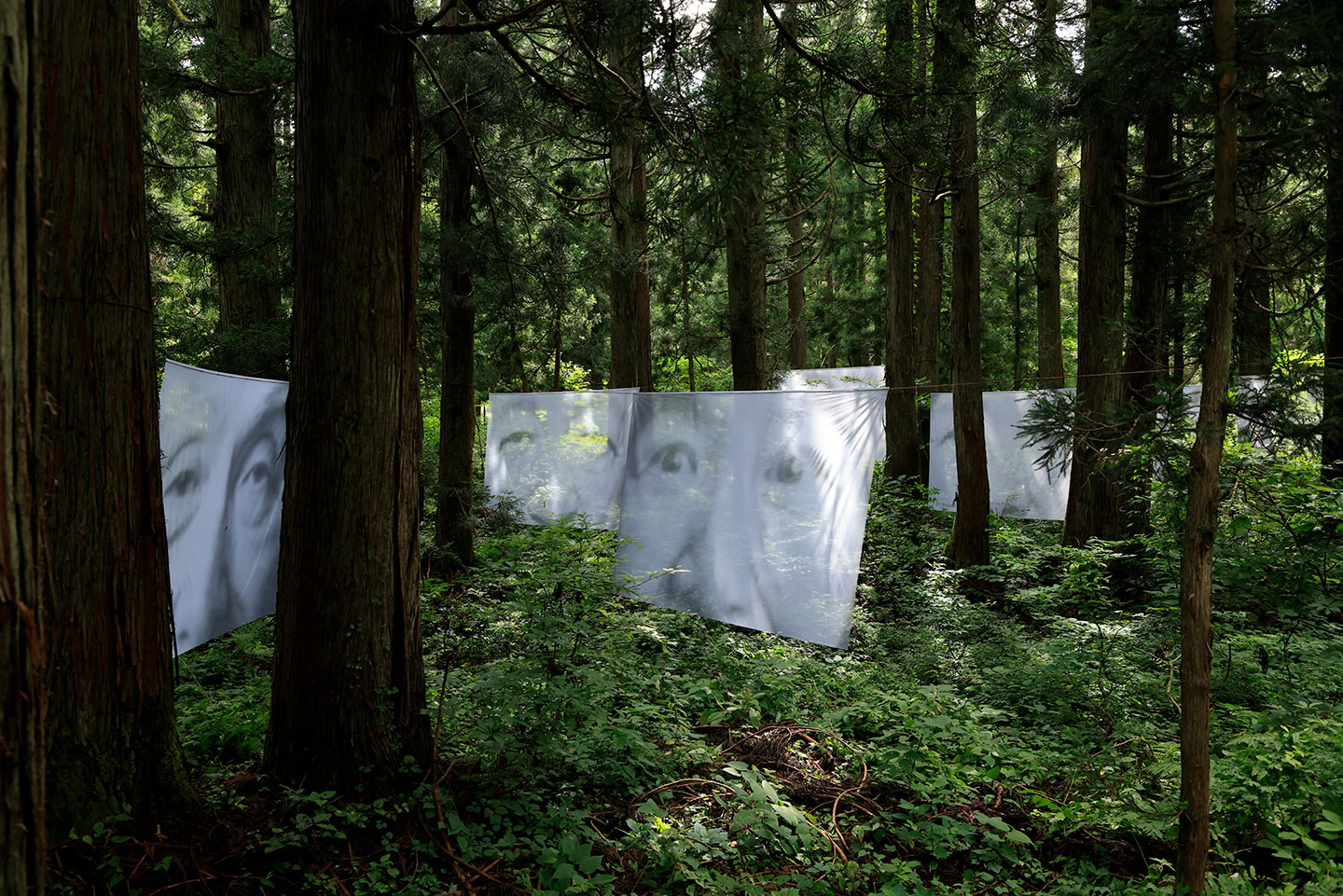
“Les Regard” by Christian Boltanski
Photo by Kioku Keizo
Artworks presented at the former Karekiata Primary School and “It was all fun in the past – from cultural anthropological fieldwork” by Isobe Yukihisa on the way to the school would help you trace pathways and facilities once existed there. It brought me a sad feeling as I imagined the life of Kotsunagi that was no longer there.
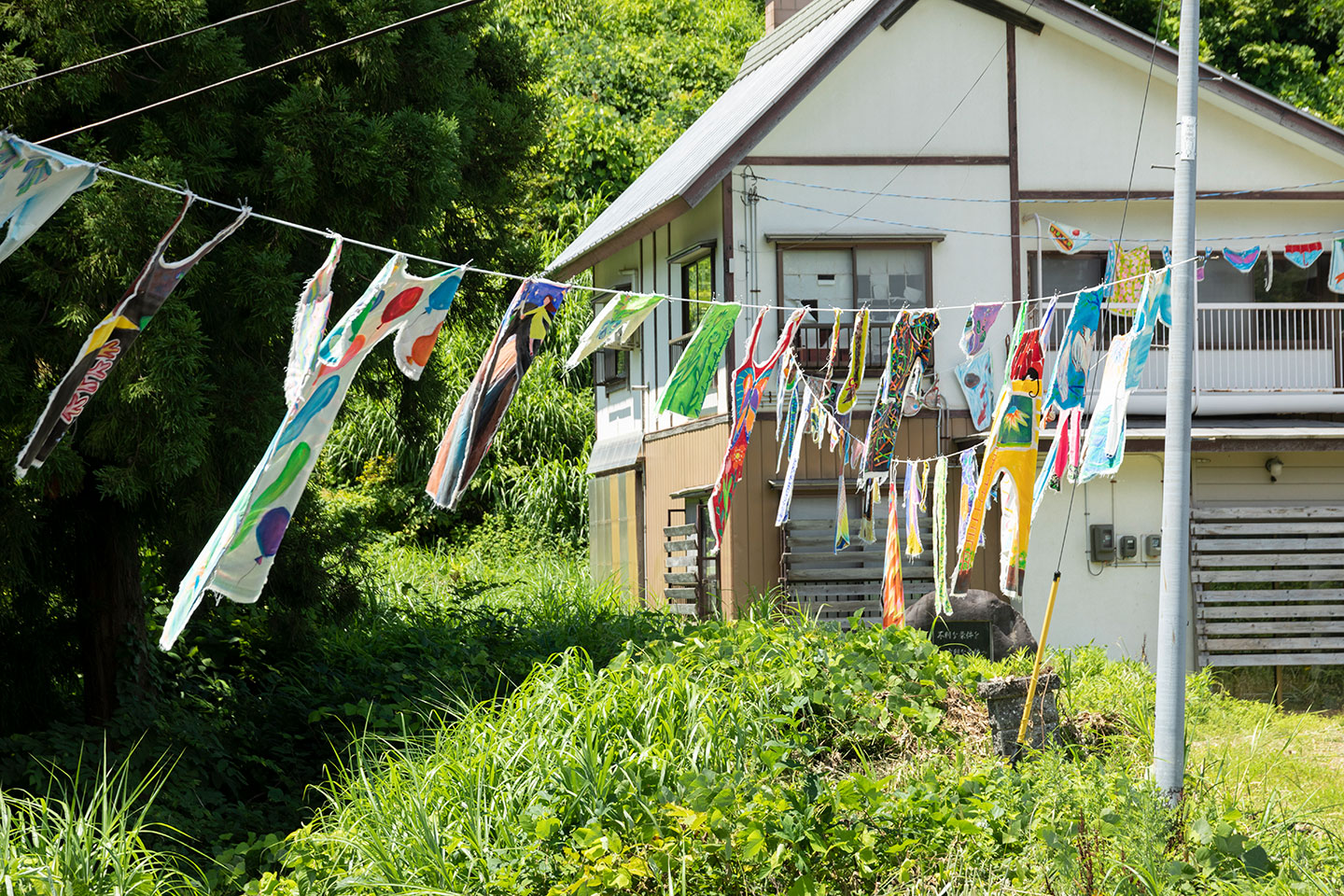
“Form of Soul / Everything is growing” by Miyabi (Karekimata Project)
Photo by Nakamura Osamu
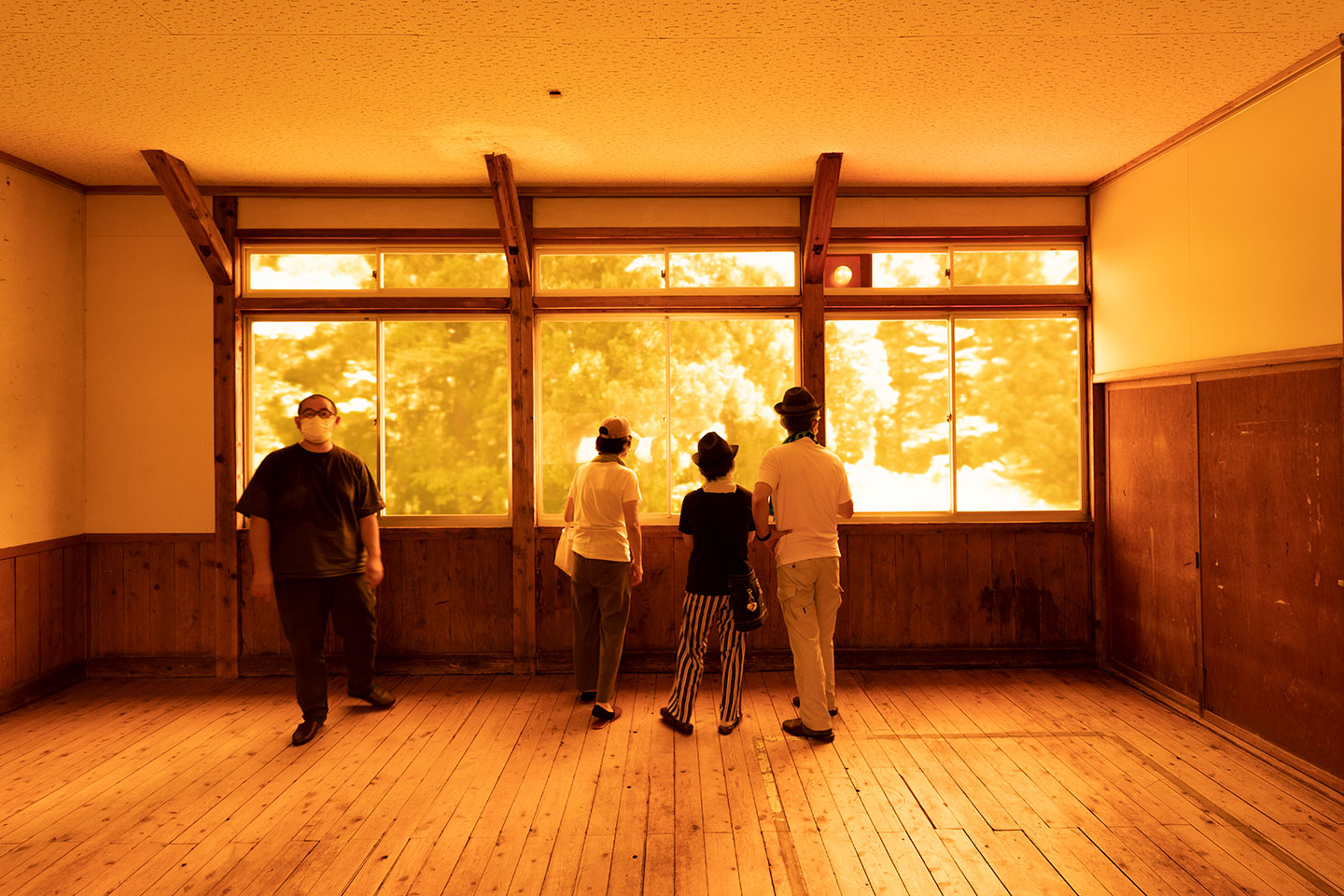
“School Building in the Sunset” by Liu Lijie (Karekimata Project)
Photo by Nakamura Osamu
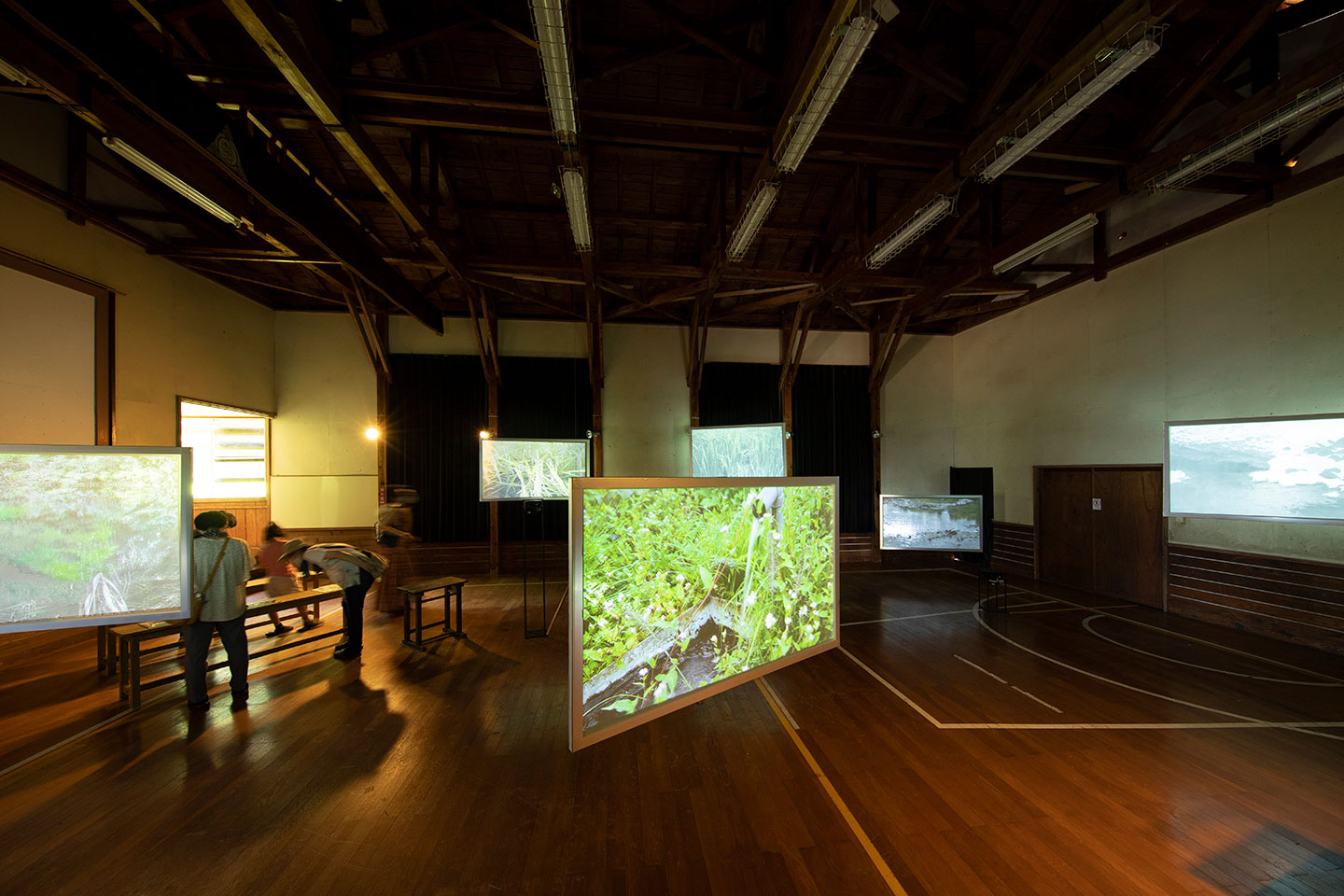
“Precipitation of light” by Yoshiki Marie (Karekimata Project)
Photo by Nakamura Osamu
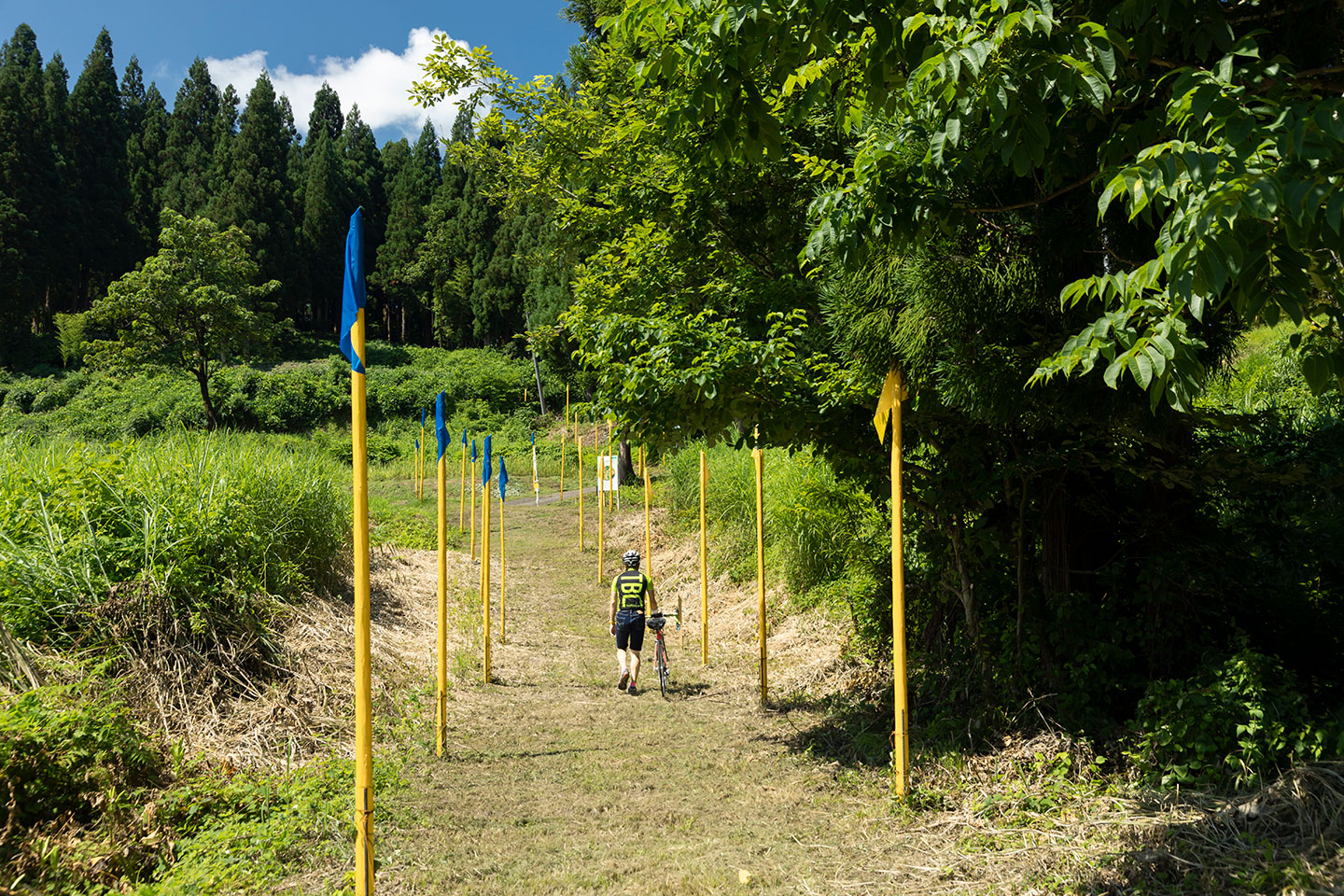
“It was all fun in the past – from cultural anthropological fieldwork” by Isobe Yukihisa Photo by Nakamura Osamu
I then moved to Nakago Green Park in the old Kawanishi-town. 25 artists created great, some are humourous works for “Satoyama Art Zoo: Social Distancing of Animals“. It was interesting to find out about the world we hope for through animals and somewhat they made you feel fulfilled.
You would then see five 3D objects hanging on the red wire over the river trail formed by river terrace leading from the Kawanishi dam. This magnificent work was “sewing the earth” by Iwaki Kazuya and Tokyo Denki Univ Iwaki Lab. The objects slowly rotated and shone blue, green, and yellow reflecting the sky, forest, and field. “Rain Song” by Komatsu Kosei was also beautiful work.
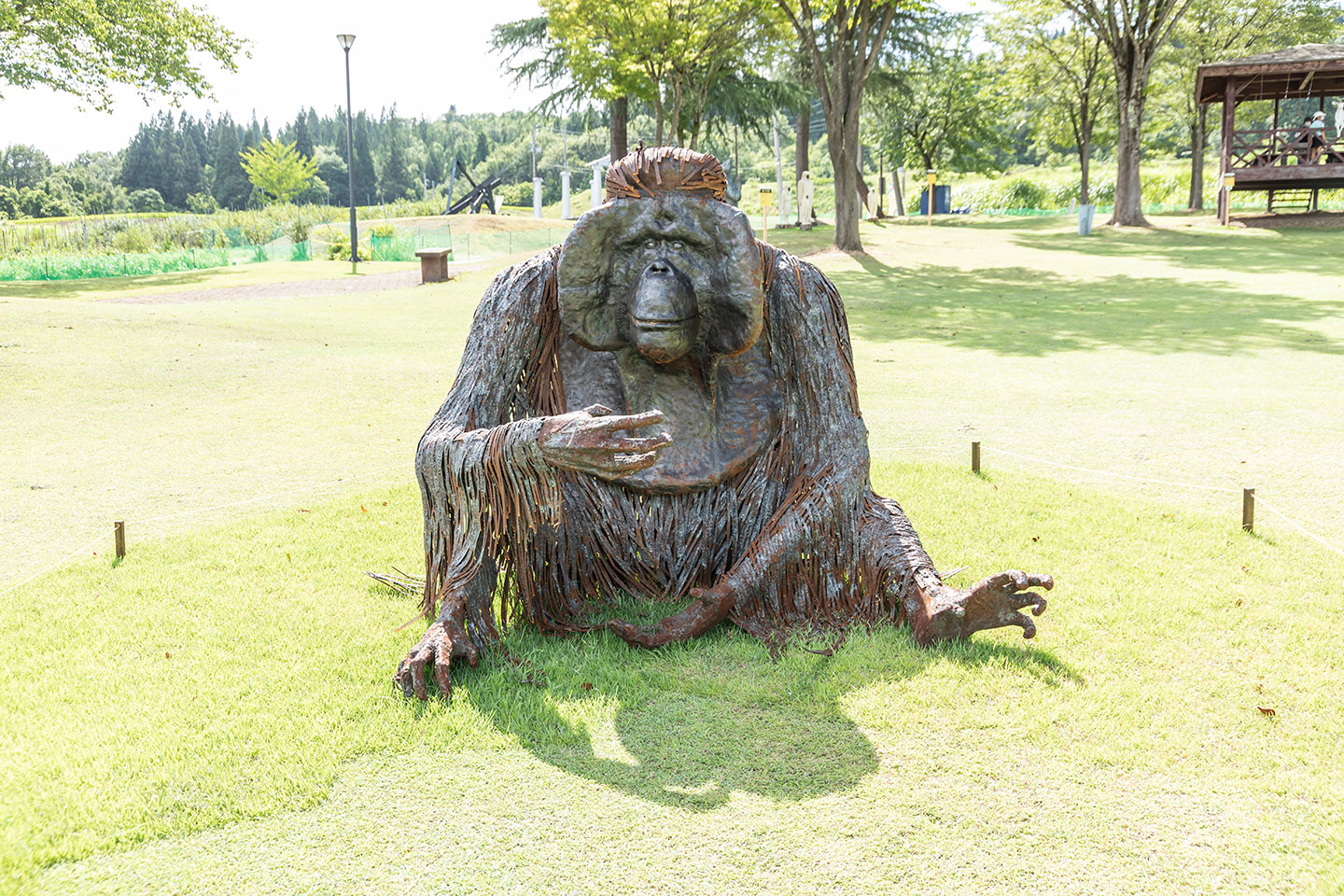
Satoyama Art Zoo / “Dakko (Hug)” by Sugawara Riku
Photo by Nakamura Osamu
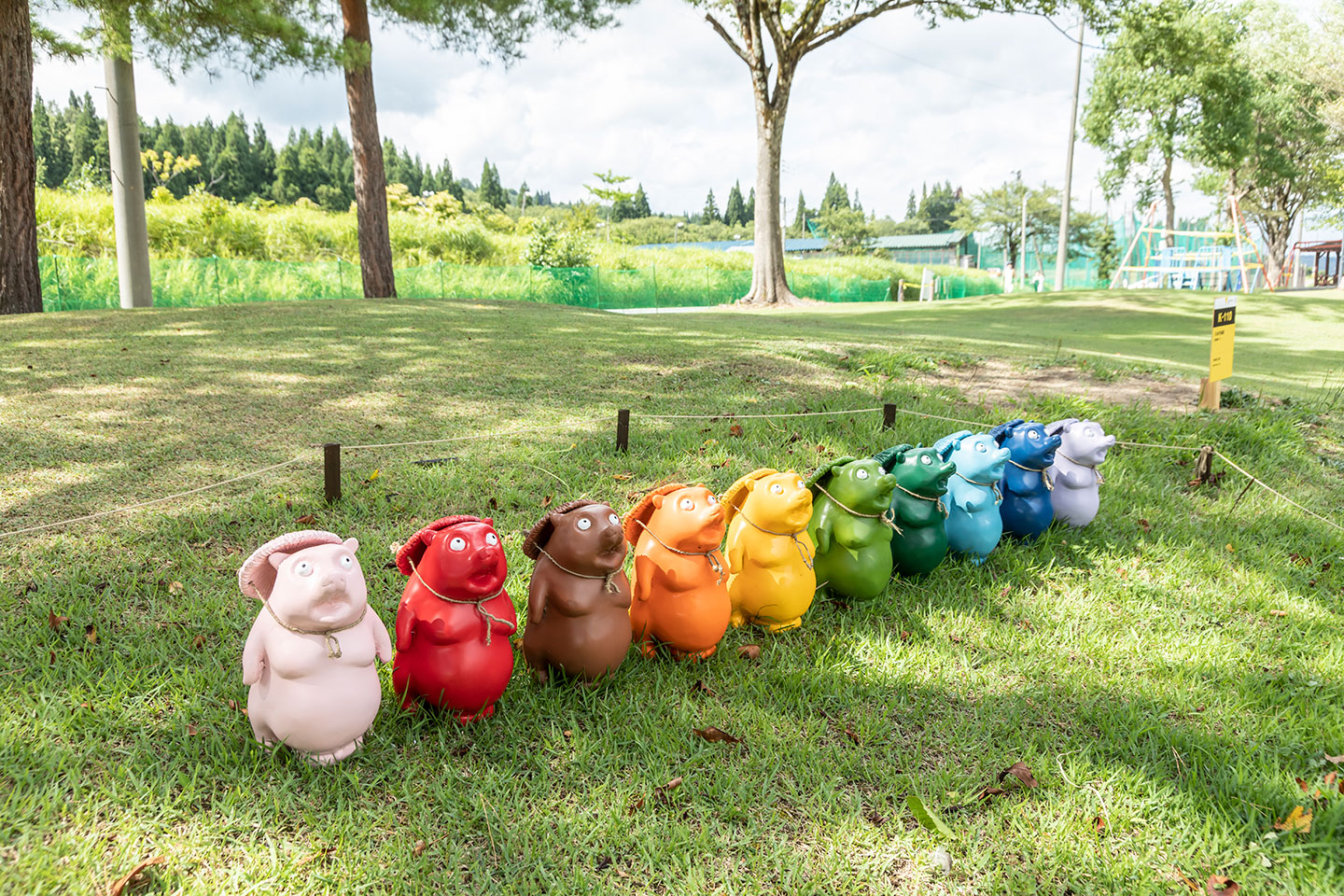
Satoyama Art Zoo / “Tanuki Mizo” by Susami Aya
Photo by Nakamura Osamu

“Rain Song” by Komatsu Kosei Photo by Kioku Keizo
Coming to Tokamachi, you would learn about how the snow-dump was invented and the vibrant community of Nanawa through “Snow Tower” by Fukazawa Takafumi.
“Note to myself: For days when I will take a seat on a new tatami chair” by Nakazaki Tohru was an overwhelming work, revealing the life of the famous local family in the post-war period in different rooms of the house which became unoccupied. They were arranged like a mosaic and the entire house seemed to have been brought back to life and reminded us of people who once engaged with the house.
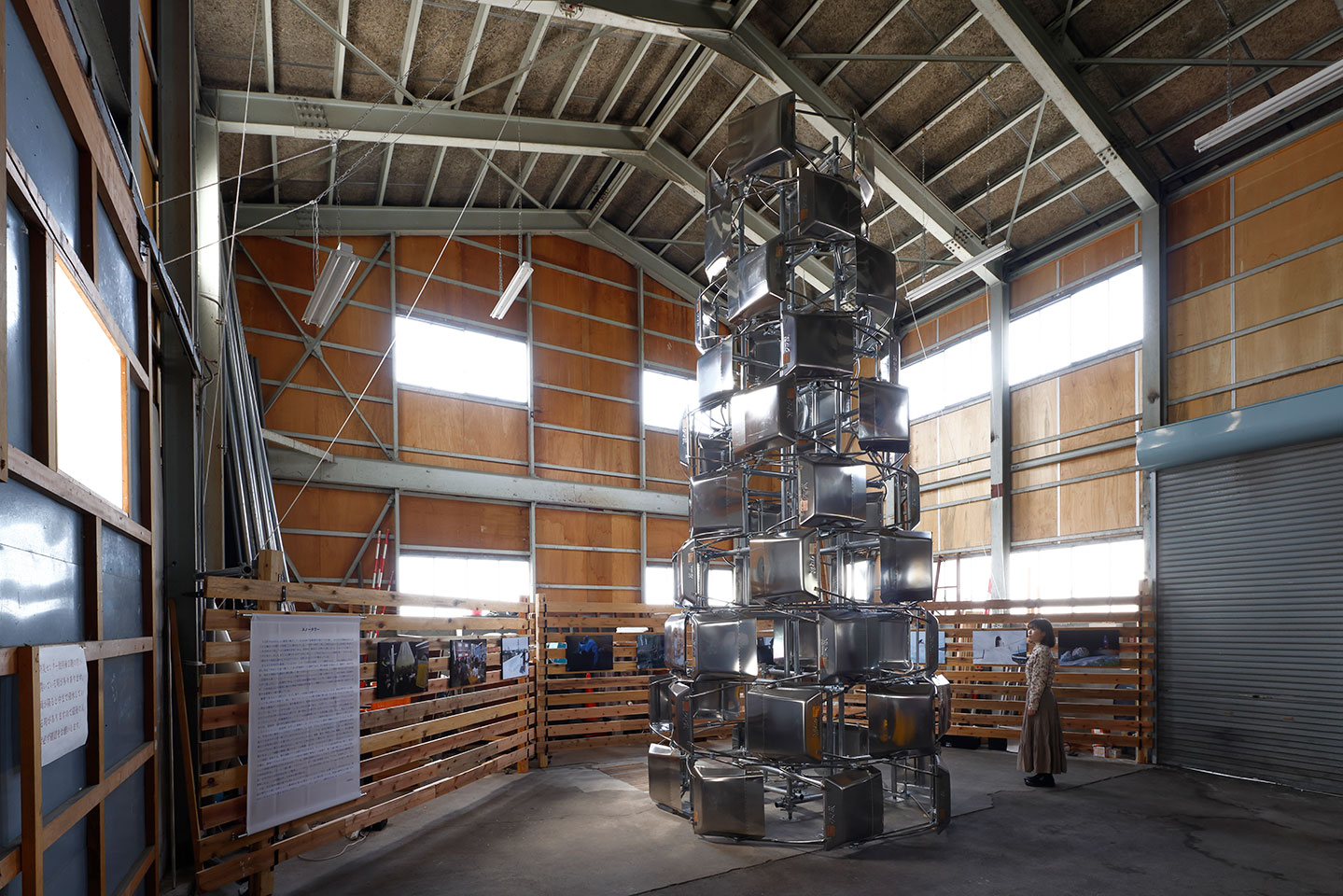
“Snow Tower” by Fukazawa Takafumi
Photo by Kioku Keizo
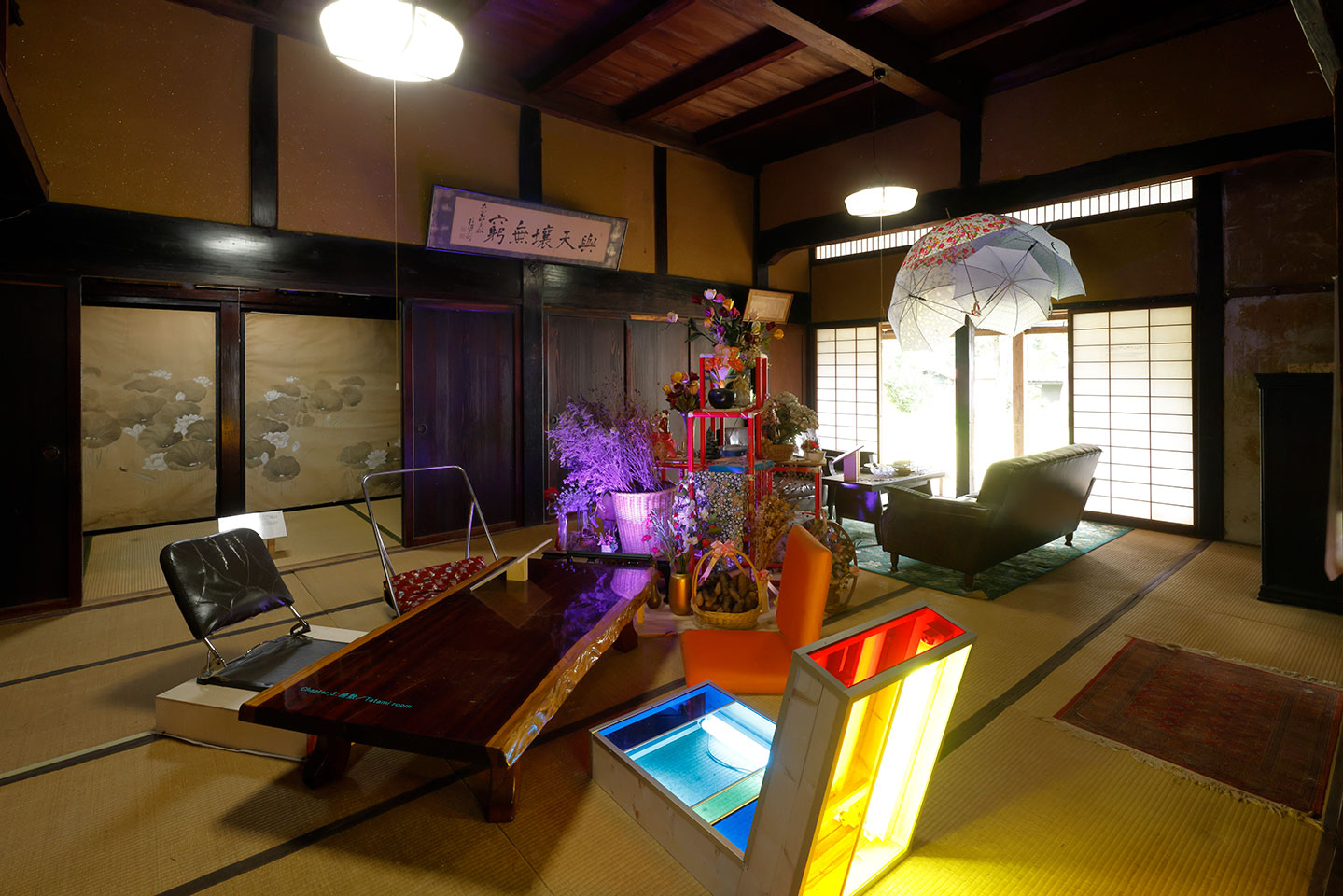
“Note to myself: For days when I will take a seat on a new tatami chair” by Nakazaki Tohru
Photo by Kioku Keizo
I am going to skip works at MonET as I have already written about them but I have to mention the 70m wide mural “physis” by Asai Yusuke on the west side of the wall of the building. It is fun to look at from the observation area. “Chord” by Tomita Noriko in the former plying mill presented the exquisiteness of weaving beautifully.
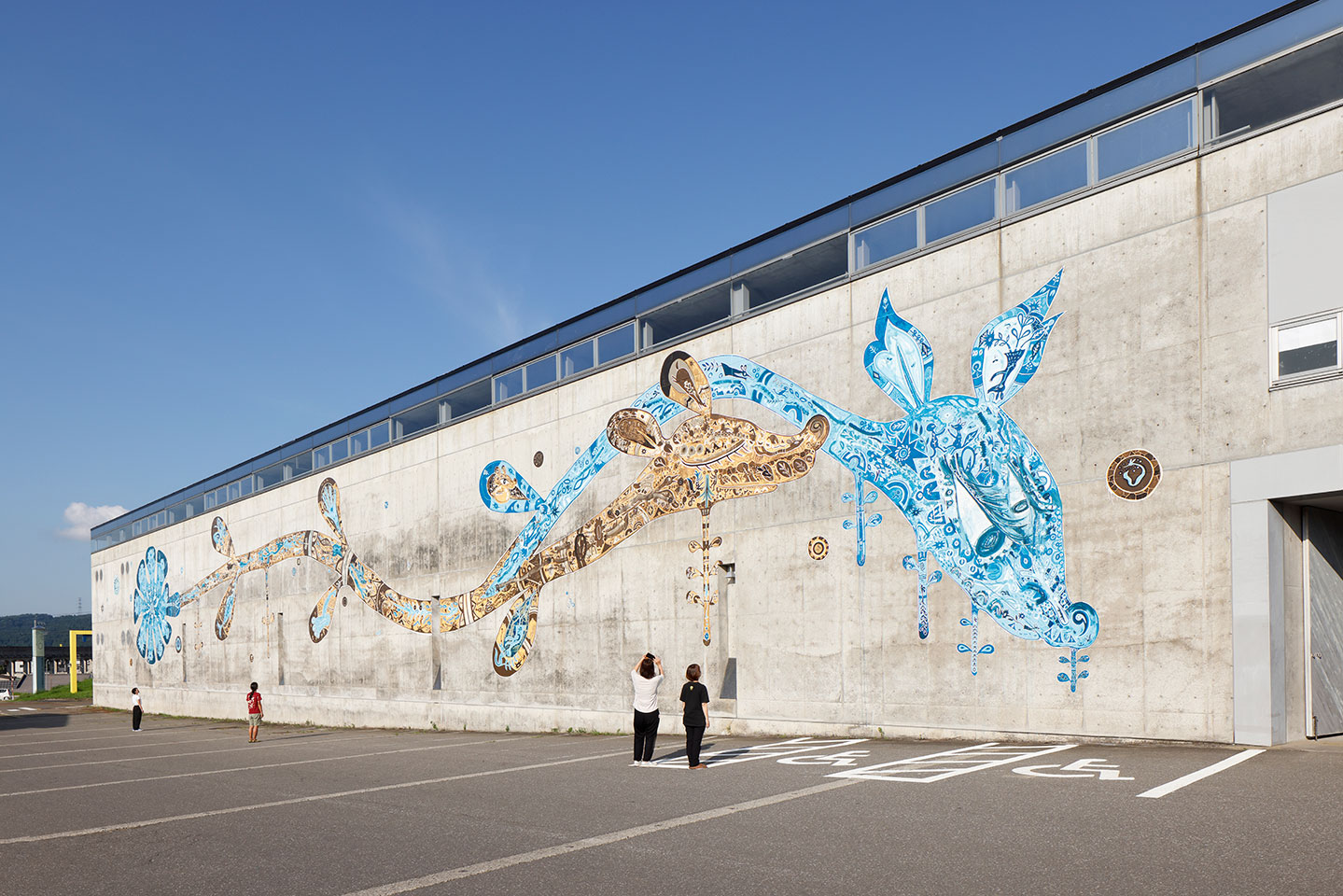
“physis” by Asai Yusuke
Photo by Kioku Keizo
Amongst other new works, “Kiji-shi’s apprentice base” by Masuda Keisuke set up at the deep end of Seidayama Camping Ground was amusing. While being an architect himself, he must be attracted to wood as a material. The hand-carved table, standing child statue, and moss-covered bear all look playful.
BankART Tsumari continued to be a hub of the artists who had been part of BankART. They presented their works inside and outside of the house including serving shaved ice by pedaling a bicycle like last time. It was good to see how these artists responded to the love of art by Ikeda Osamu, the founder of BankART, who passed away on 16 March 2022.
.
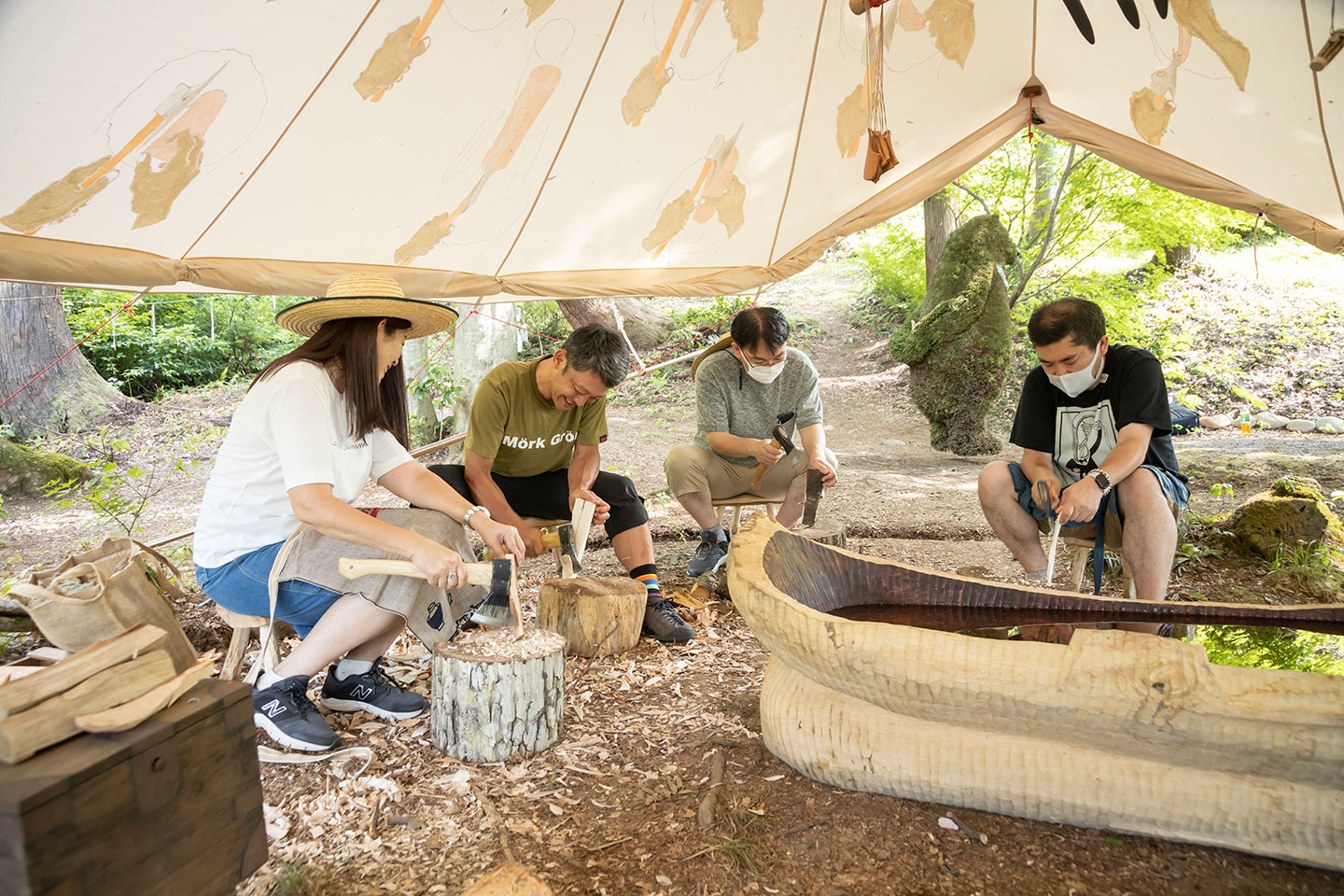
“Kiji-shi’s apprentice base” by Masuda Keisuke
Photo by Nakamura Osamu

“Kiji-shi’s apprentice base” by Masuda Keisuke
Photo by Nakamura Osamu
Museum of Picture Book Art, of course, showed the new work by Tashima Seizo. The summer exhibition, “Signs of life: The Story of Towa and Toto” was, yet again, a new, engaging, and interesting work.
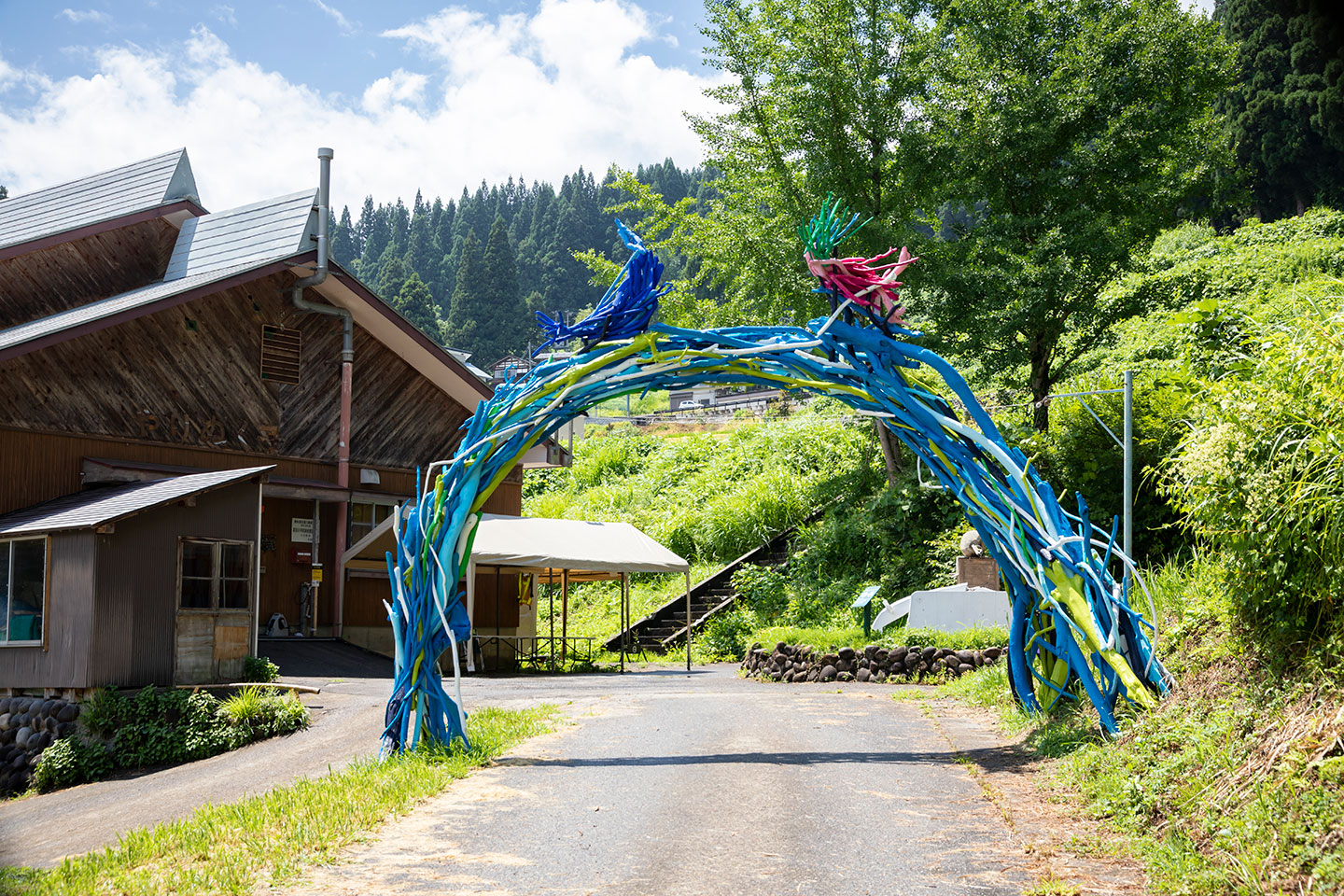
“Signs of life: The Story of Towa and Toto” by Tashima Seizo
Photo by Nakamura Osamu
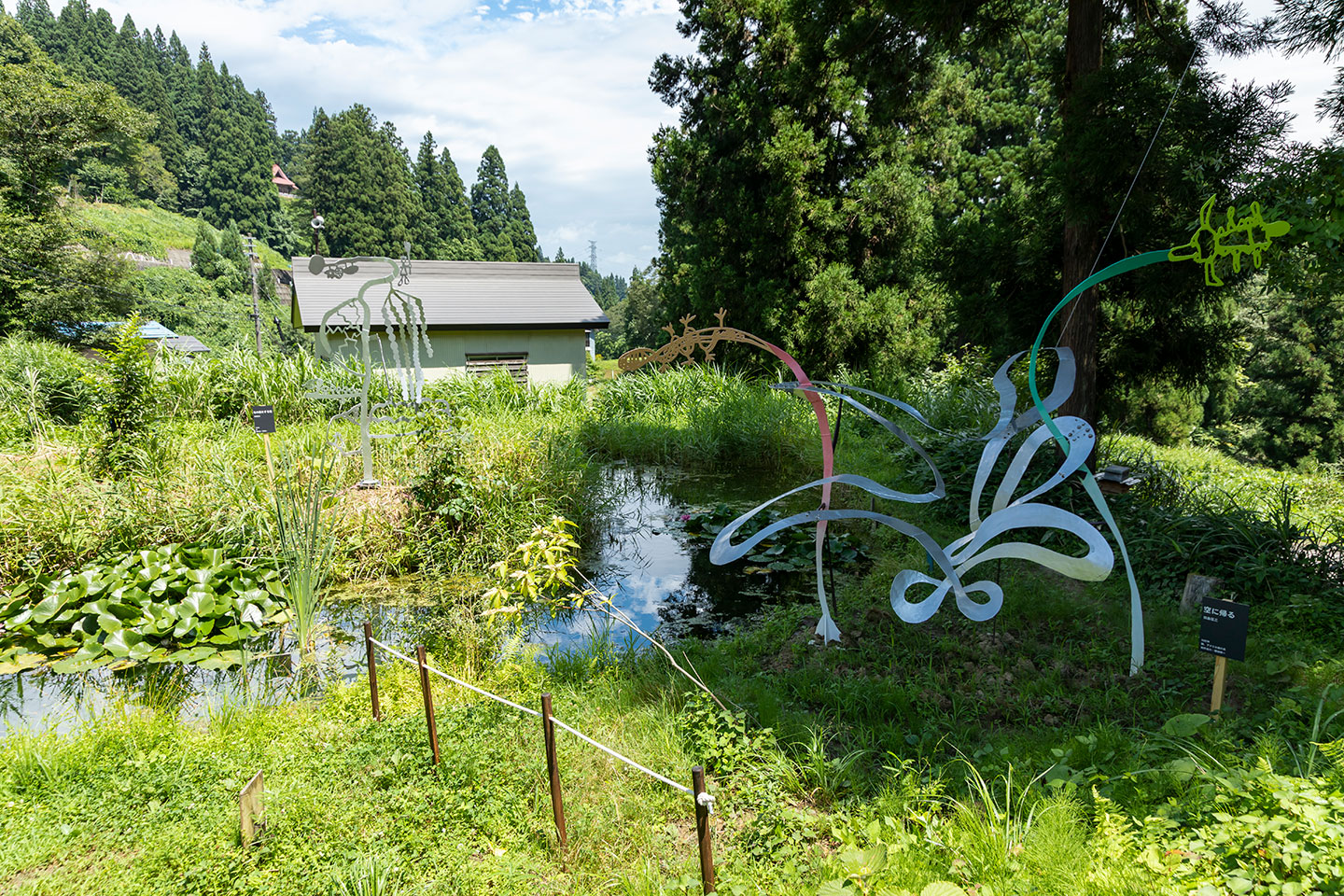
“Signs of life: The Story of Towa and Toto” by Tashima Seizo
Photo by Nakamura Osamu
"House for Dialogue" special opening
Although it is not an artwork of ETAT, I would like to mention “House for Dialogue”, close to the Museum of Picture Book Art. It was started by students from Rikkyo University who participated in the folklore research practice conducted in Hachi village. They met Ms Omi Mino when they stayed at her house and learnt about the diligent documentation of her husband’s work called “the work and life of woodcutters” she had put together. Ms Omi was planning to transform part of the house into an exhibition space but couldn’t make it happen when she fell ill. That was how “House for Dialogue” was set up by Kadowaki Yoko and other local volunteers and students. In addition to the house being built by the woodcutter himself and the documentation being magnificent, the house is filled with the generosity of those who have been supporting to operate and maintain this space. It has, however, become difficult to continue due to the ageing of the house. Visit the house on 6 and 21 August before it finally closes its door to the public.
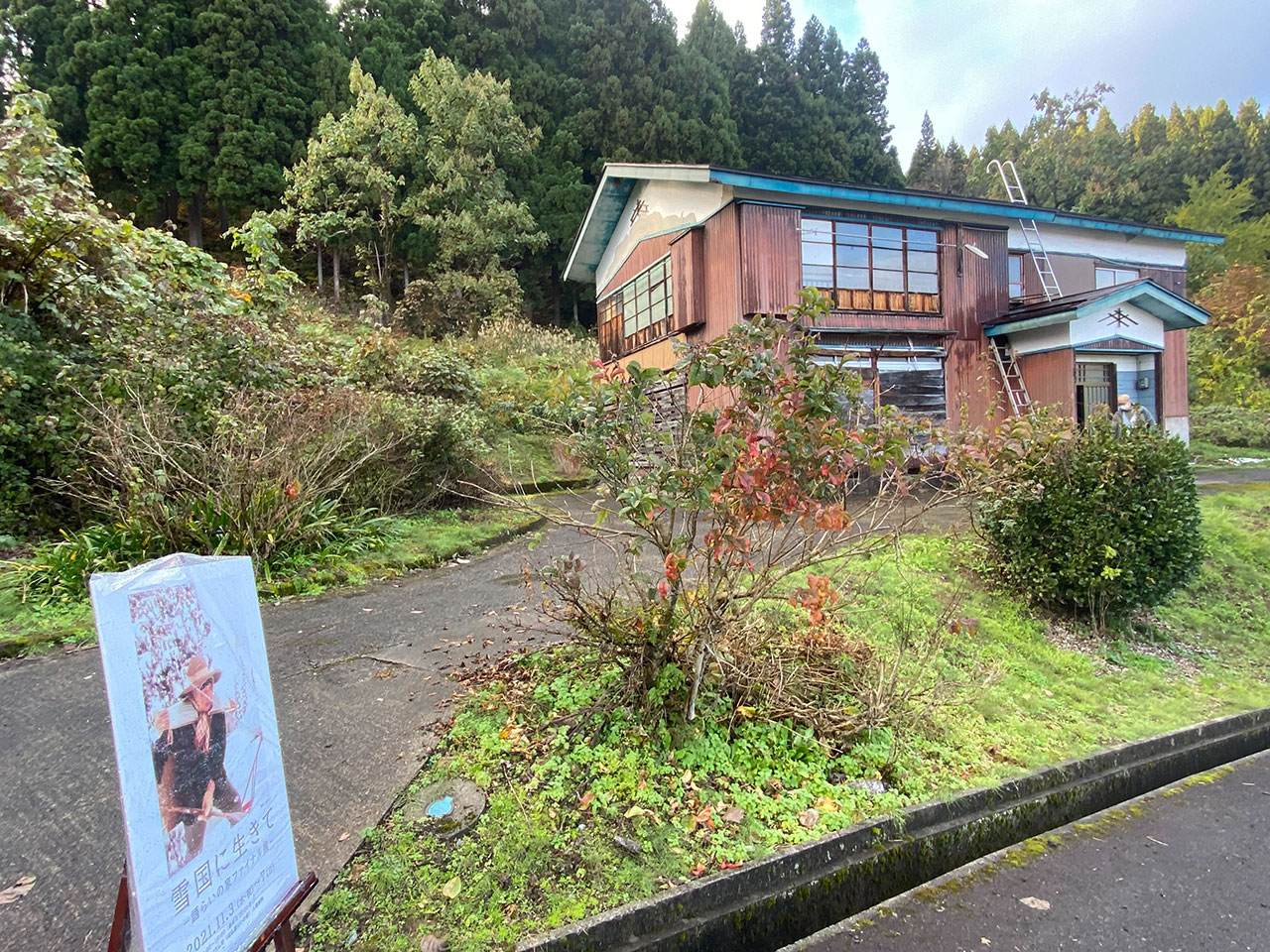
"House for Dialogue" special opening
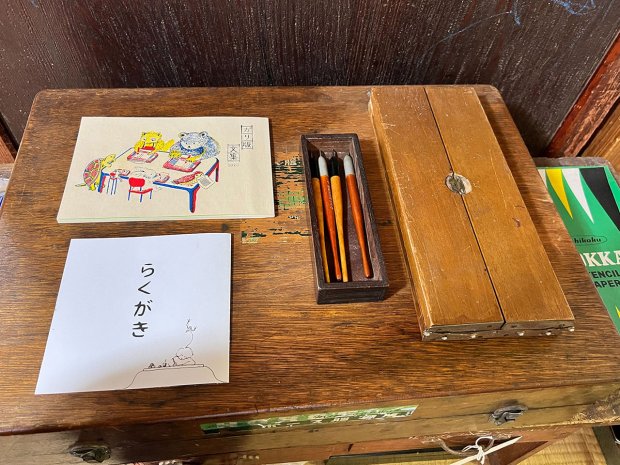
Final exhibition "Living in the snow country"
【Opening dates and time】11:00-16:00 on Sat 6 and Sun 21 August 2022
【Address】2939-3 Sugata Ko, Tokamachi-city, Niigata 949-8561
【Admission】Free / No booking required
≫Official Website





